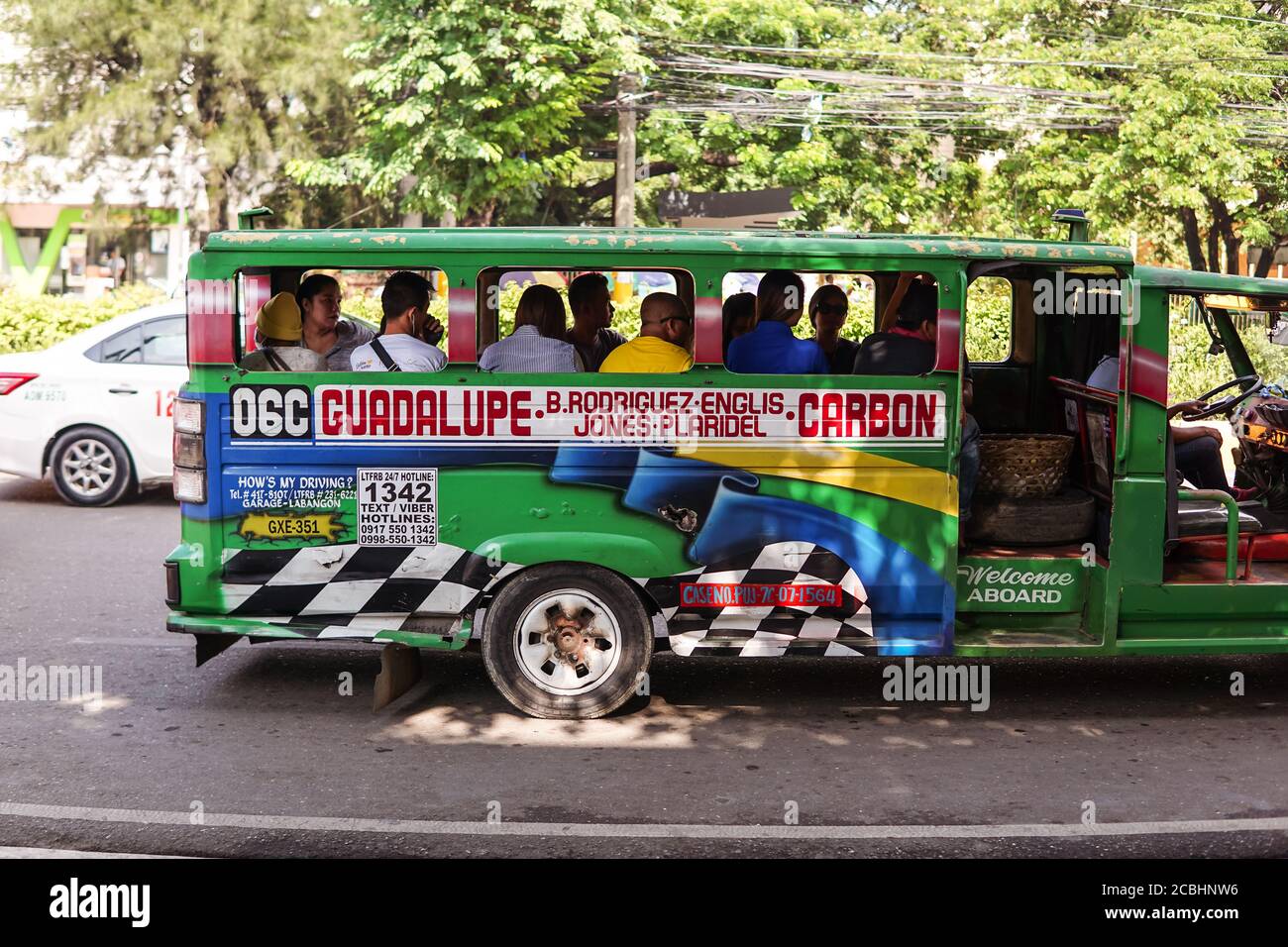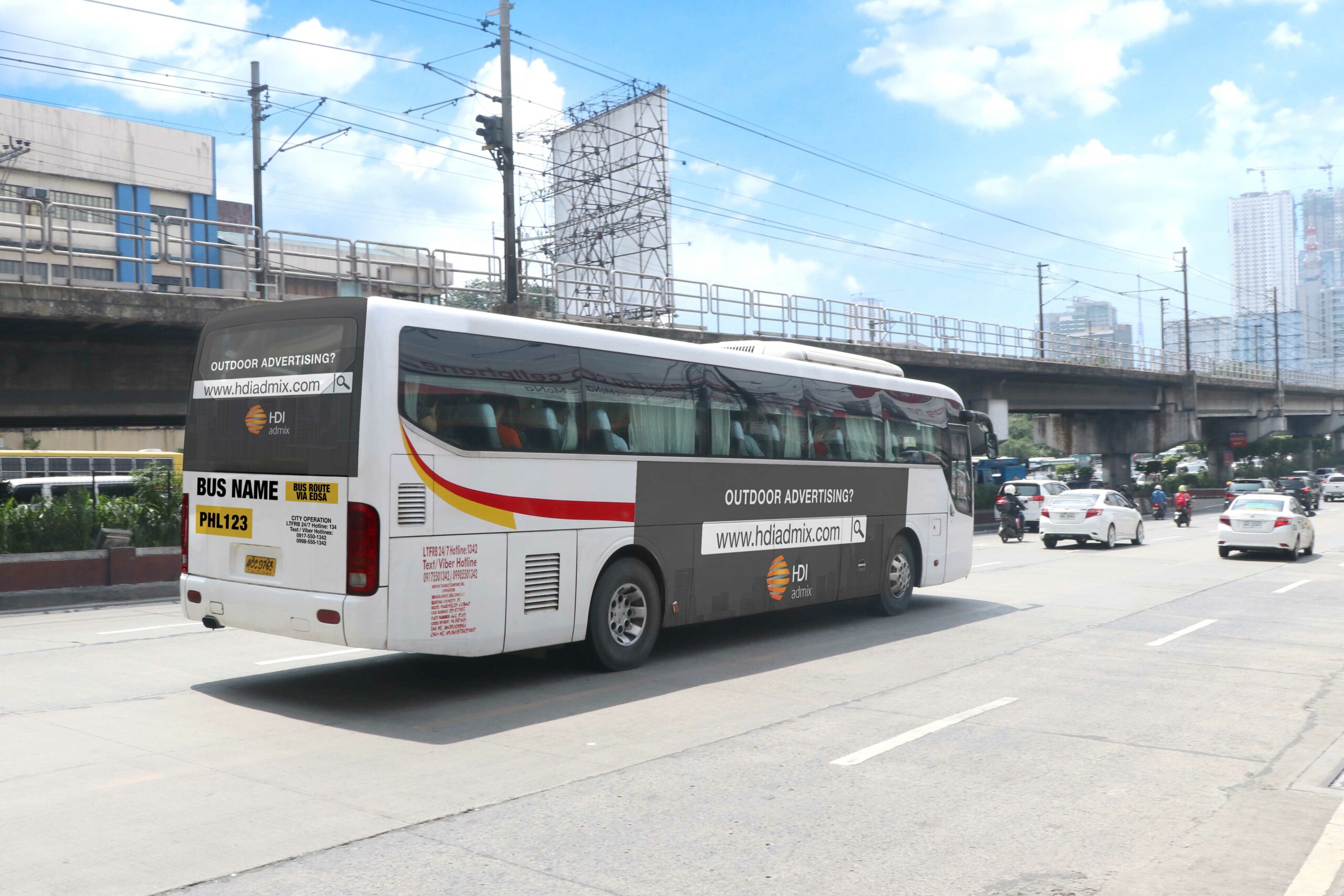Increase Your Organization with Transit Advertising Philippines
Increase Your Organization with Transit Advertising Philippines
Blog Article
Understanding the Duty of Transit Marketing in Enhancing Brand Visibility and Customer Interaction
Transportation advertising has actually emerged as a critical component in the marketing landscape, providing distinct possibilities for brand names to raise their exposure and engage customers successfully. With the capacity to reach a restricted and diverse target market throughout their daily commutes, these advertising and marketing strategies are not just regarding presence; they have to do with producing meaningful links with possible customers. As we explore the diverse advantages and innovative techniques within transportation marketing, it ends up being important to think about just how these aspects jointly influence customer assumption and behavior, increasing questions regarding their long-term impact on brand loyalty.
Meaning of Transportation Marketing
Transportation advertising refers to the method of advertising items, services, or brand names through promotions put around mass transit systems. This kind of advertising and marketing encompasses a variety of placements, including posters on trains and buses, digital screens at transit stations, and covers on the outside of lorries. It aims to reach a varied target market, maximizing the high foot traffic related to public transportation.
Transit advertising is strategically positioned to record the interest of commuters, who often invest significant time traveling or waiting. By integrating advertisements right into the daily regimens of people, brands can produce a long-term impact and foster brand name recognition. The medium is particularly efficient in urban environments, where public transport is a key setting of travel.
In addition, transit marketing can help with localized targeting, permitting organizations to reach certain demographics based on transit paths and station areas. As metropolitan populaces grow and the use of public transportation boosts, this advertising approach has gained prestige as an important component of incorporated advertising and marketing approaches. The vibrant nature of transportation advertising, incorporated with its capacity to engage consumers in a captive setting, underscores its value in modern advertising practices.
Advantages of Transportation Advertising And Marketing
The effectiveness of transit marketing hinges on its capacity to deliver a wide range of advantages to brand names seeking to boost exposure and interaction. Among the main advantages is the considerable reach it uses; transportation advertisements can successfully target varied demographics across urban locations, reaching both commuters and pedestrians alike. This wide direct exposure dramatically improves brand name recognition.
Another advantage is the high regularity of impressions. As transportation lorries follow recognized courses and stop at numerous places, they produce repeated direct exposure that enhances brand messages. This frequency cultivates experience, which is essential in customer decision-making.
Transportation advertising is also cost-effective contrasted to various other media systems. Given its expansive reach and capacity for high perceptions, brand names often experience a lower cost per thousand impressions (CPM), maximizing their marketing budget plan.
Furthermore, transportation advertisements can create a feeling of area connection. By straightening with regional transportation systems, brand names can reverberate with regional audiences and promote a feeling of regional pride. This localized strategy improves brand name commitment and interaction, making transit advertising an engaging choice for companies aiming to solidify their presence in the marketplace.

Reliable Strategies for Transit Campaigns
To optimize the influence of transit projects, brand names need to take advantage of tactical planning and execution tailored to their target market. First, recognizing the demographic Go Here attributes of the audience utilizing public transportation is essential. This permits brand names to develop individualized messaging that resonates with possible customers.
Next, picking the ideal transit mediums is essential. Whether using bus wraps, metro posters, or digital displays, each tool has unique advantages that can enhance visibility. As an example, lively visuals on bus covers can attract focus, while digital advertisements can be updated often to mirror prompt promos.
In addition, incorporating a natural branding approach throughout transit systems makes certain consistency and strengthens the brand name's identification. Utilizing memorable taglines and captivating designs will enhance brand name recall amongst commuters.
By using these approaches, brands can effectively harness the potential of transit advertising, cultivating higher awareness and link with their target audience. Eventually, a well-executed transit campaign can drive substantial development in brand presence and customer interaction.

Measuring Influence and Interaction
In assessing the check that effectiveness of transportation ad campaign, precise dimension of influence and interaction is essential for brands looking for to enhance their marketing approaches. Metrics such as reach, frequency, and perceptions supply fundamental information to examine exposure. Assessing these elements aids identify the amount of possible customers are subjected to the promotions throughout their day-to-day commutes.
Interaction can be further gauged via customer interactions, such as web site traffic, social media sites points out, and direct feedbacks to calls-to-action featured in the ads. Utilizing devices like QR codes or distinct Links can assist in tracking of consumer habits straight connected to transportation projects. Studies and comments systems also offer as beneficial approaches to collect qualitative data on consumer understandings and recall of the promotion.
In addition, progressed analytics and attribution designs can correlate transportation direct exposure with succeeding getting habits, using insights into the return on investment. By utilizing a thorough strategy that incorporates measurable and qualitative procedures, brand names can create a nuanced understanding of their transportation advertising and marketing effect. Inevitably, this data-driven strategy enables brands to improve their campaigns, guaranteeing they resonate properly with target audiences and improve overall brand visibility.
Case Studies of Effective Projects
Effective transportation advertising and marketing campaigns serve as compelling examples of exactly how effective techniques can elevate brand exposure and interaction. Transit Advertising Philippines. One remarkable situation is the "I Love New york city" campaign, which changed the city's photo and drew in millions of vacationers. By utilizing subway ads, signboards, check my source and bus covers, the project developed a solid, natural brand identity, causing a considerable uptick in tourist and local company patronage
Another excellent campaign is Coca-Cola's "Share a Coke" initiative, which leveraged transportation advertising to individualize the brand name experience. By featuring popular names on advertising materials across different transportation systems, Coca-Cola fostered a deeper emotional link with customers, encouraging them to share their experiences on social media.
Furthermore, the "Got Milk?" campaign successfully used public transportation ads to reach a broad audience, enhancing the message of the value of milk in a well balanced diet regimen. The project saw a quantifiable boost in milk consumption in target demographics.
These study illustrate that when implemented thoughtfully, transportation advertising can substantially improve brand presence, foster customer engagement, and drive quantifiable results, demonstrating its crucial duty in modern-day advertising strategies. - Transit Advertising Philippines
Conclusion
In verdict, transit advertising and marketing offers as an important device for enhancing brand presence and cultivating consumer involvement. Eventually, the capacity to determine involvement and assess successful instance researches highlights the efficiency of transit advertising in driving brand name loyalty and customer interactions.
Transit marketing has actually emerged as an essential component in the marketing landscape, supplying unique opportunities for brands to boost their exposure and engage customers effectively.Additionally, transit advertising and marketing can help with localized targeting, enabling businesses to reach particular demographics based on transportation routes and terminal places.In evaluating the effectiveness of transit marketing campaigns, accurate measurement of impact and interaction is important for brands seeking to enhance their advertising approaches.Successful transportation marketing projects serve as engaging instances of how reliable techniques can raise brand presence and interaction.In verdict, transportation advertising and marketing serves as an essential device for improving brand name presence and promoting consumer involvement.
Report this page